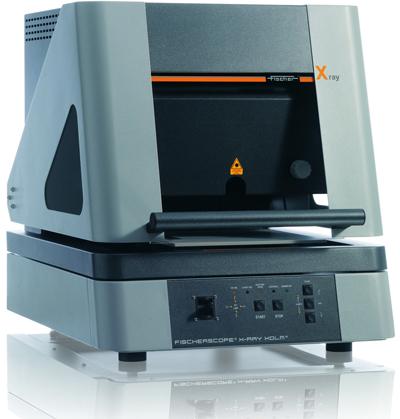
High-precision industrial saws, drills and dies used for the cutting, punching and forming of steel, hard metal or aluminum parts are subject to extreme wear and tear. To increase the service life of these often very expensive tools, they are coated with a hard material coating via a PVD (physical vapor deposition) process. The thickness of the PVD layer determines the durability and therefore the life expectancy of the tool.
As with all types of coatings, the PVD process must also be closely monitored and the thickness of the PVD-deposited layer measured. Alongside standard destructive testing methods, the non-destructive X-ray fluorescence method (XRF) is preferable for this purpose. The FISCHERSCOPE X-RAY XDLM237 from Fischer Technology Inc. combines the high-intensity beam of a micro-focus tube with a small aperture and large detector window.
The significant advantages of this device are:
• Non-destructive measurements, without damage to valuable tools
• Fast measurement times
• Smallest measurement spot: 50µm
The instrument's specialization for this purpose means that layer thickness can be accurately measured on even the finest cutting edges of very high-end tools. Furthermore, using the same instrument, it is possible to determine the base tools' precise metallic composition, e.g. to determine cobalt leaching when an old coating is chemically removed before a new coating is applied.
Contact Details
Related Glossary Terms
- physical vapor deposition ( PVD)
physical vapor deposition ( PVD)
Tool-coating process performed at low temperature (500° C), compared to chemical vapor deposition (1,000° C). Employs electric field to generate necessary heat for depositing coating on a tool’s surface. See CVD, chemical vapor deposition.

